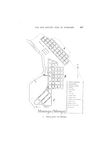Double Heritage
- Talin (EE), Amsterdam (NL) & Moengo (SR)
- September 2018 — August 2020
- In collaboration with Basta Dwight DjoeDavid BooiEdilson WatsaamGideon PleinJair BenjeJean-Marc AsimiaJerusa MainsieLinio KastielLuigi KertosariOtt MetusalaRobbert BooiRossiano Toto
- Thanks to Anna Van LeeuwenChris KokKenny van GenderenLilly DuijmMarcel PinasMarian DuffMarieke VisserRon ReederThe Kibii Foundation
- Supported by BankGiro Lottery FundFonds voor ZuidoostGemeente ZuidoostShared Cultural Heritage
Double Heritage is a photography project about public life in the town of Moengo, Suriname, which is, on the one hand, formed by its colonial buildings and spaces; on the other, it is defined by the culture of its residents. It documents the heritage and identity of young people from the Marowijne district.
During the course of six weeks, eleven Moengonese adolescents worked on different assignments adressing themes such as identity and environment, history and future, decay and resilience.
The photos that the youngsters created for the project highlight various aspects of their lives in Moengo; marron culture, Suralco’s legacy, the Suriname Guerrilla War, the church, nature, family and community, fashion, education, jobs and unemployment. These themes play a key role in understanding Moengo’s present and past.
The photo’s that the project resulted in, have been bundled in a photographic book called Moengo!, which was released on 27 August 2020.


